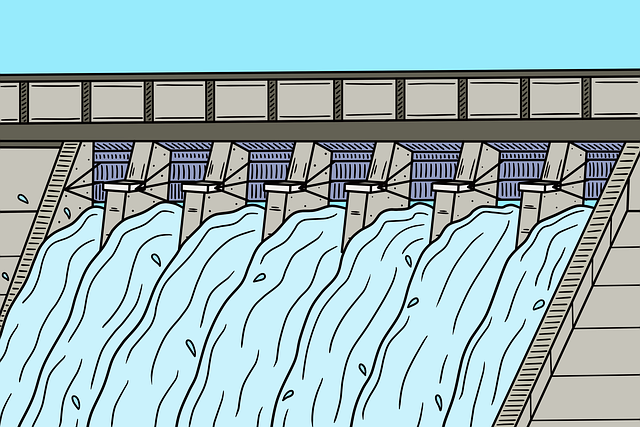After a flood, drying a New Braunfels home requires a meticulous process involving expert water extraction, specialized equipment, and knowledge to assess damage, identify hidden moisture, and mitigate health hazards. This includes immediate removal of standing water, regular inspections, humidity control with dehumidifiers and air movers, proper ventilation, monitoring with hygrometers, and thorough cleaning to restore the home safely and effectively.
Water mitigation and moisture extraction are crucial steps after a flood, especially in New Braunfels. In this article, we’ll guide you through understanding water mitigation’s importance and the critical role experts play in restoring flooded homes. We provide a step-by-step process for drying out your residence effectively, along with tips to overcome common challenges. Learn how to navigate post-flood restoration successfully and ‘How to dry out a flooded house in New Braunfels’ with these expert insights.
- Understanding Water Mitigation: The Role of Experts in Flooded Homes
- Step-by-Step Guide: Drying Out Your New Braunfels Residence
- Common Challenges and Tips for Effective Post-Flood Restoration
Understanding Water Mitigation: The Role of Experts in Flooded Homes

When a home in New Braunfelss suffers from flooding, it’s crucial to understand that water mitigation goes beyond basic drying. It involves a complex process to safely and effectively remove moisture, prevent structural damage, and minimize the risk of mold growth. This is where experts in water extraction come into play.
These professionals are equipped with specialized equipment and knowledge to assess the extent of water damage, identify hidden moisture sources, and employ the right techniques for drying out the property. Their expertise includes using advanced dehumidifiers, air movers, and monitoring systems to ensure every inch of the affected area is thoroughly dried. This meticulous approach not only helps restore the home to its pre-flood condition but also ensures the health and safety of residents by mitigating potential hazards associated with standing water and damp environments.
Step-by-Step Guide: Drying Out Your New Braunfels Residence

After a flood, drying out your New Braunfels residence is crucial for mitigating water damage and preventing mold growth. Here’s a step-by-step guide to help you navigate this process efficiently:
1. Safety First: Before beginning, ensure your safety by turning off power at the main breaker box and checking for any gas leaks. Wear protective gear like gloves, goggles, and a mask to avoid health risks from mold or contaminated water.
2. Immediate Extraction: Begin with immediate moisture extraction using fans, dehumidifiers, and high-powered pumps if necessary. Remove standing water as quickly as possible to prevent further damage. Focus on areas with the highest moisture content, such as carpets, furniture, and walls.
3. Drying Process: Utilize a combination of air movement and humidity control. Position fans strategically to circulate air throughout the house, especially in corners and hard-to-reach areas. Use dehumidifiers to reduce humidity levels below 60%. This will help prevent mold growth and dry out porous materials faster.
4. Inspect and Monitor: Regularly inspect affected areas for signs of lingering moisture or mold growth. Check walls, floors, ceilings, and furniture. Use a moisture meter to ensure all surfaces are completely dry before moving on to the next stage.
5. Clean and Disinfect: Once everything is dry, thoroughly clean all surfaces with a mixture of water and mild detergent. Pay special attention to areas where mold or mildew may have formed. Disinfect to kill any remaining bacteria or spores and prevent future growth.
Common Challenges and Tips for Effective Post-Flood Restoration

After a flood, restoring a home in New Braunfels presents unique challenges due to the region’s climate and water-prone environment. One of the primary hurdles is effectively drying out the structure to prevent mold growth and structural damage. Moisture extraction is crucial, but it requires a systematic approach. Often, standing water is only the surface issue; the real problem lies in saturated walls, flooring, and insulation.
To successfully dry out a flooded house, start by removing visible water and then employ specialized equipment like dehumidifiers and air movers. It’s essential to address each area thoroughly, monitoring moisture levels with hygrometers. Ensure proper ventilation during the drying process. Additionally, consider the impact of humidity and temperature on the restoration timeline. Prompt action and professional expertise are vital to mitigate long-term issues, ensuring a healthier and safer living environment in New Braunfels.
In the aftermath of a flood, effective water mitigation and moisture extraction are crucial steps towards restoring your New Braunfels residence. By understanding the process, addressing common challenges, and following expert guidance, you can ensure a swift and successful drying out procedure. Remember, a well-executed restoration plan not only saves your home but also minimizes potential long-term damage, making it a vital step in the recovery process. With the right approach and the help of moisture extraction experts, “How to dry out a flooded house in New Braunfels” becomes a manageable task, leading to a healthier and safer living environment.
